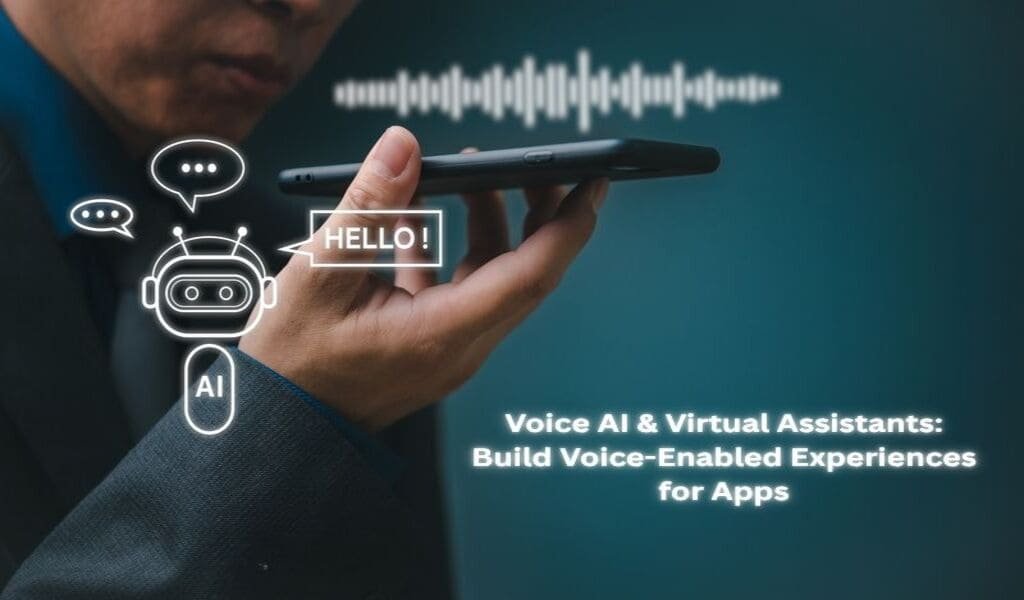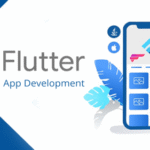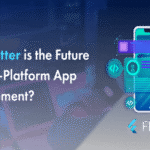AI DevelopmentVoice AI & Virtual Assistants: Build Voice-Enabled Experiences for Apps

Table of Contents
Introduction
In the age of touchless interaction, voice-enabled apps are no longer futuristic — they’re essential. From asking Alexa to dim the lights to commanding a mobile app to check your bank balance, users are embracing voice-first experiences across industries.
For businesses, integrating Voice AI and virtual assistants into mobile apps opens up new levels of engagement, accessibility, and automation.
In this detailed guide, we’ll explore how to build voice-enabled experiences using the latest in AI, NLP, and speech recognition — and how the right development partner in Chennai can help you scale affordably and effectively.
Why Voice-Enabled Experiences Matter in 2025
Voice isn’t just a convenience — it’s a competitive advantage.
With rising smartphone penetration, increasing comfort with digital assistants, and regional language support, India is witnessing a sharp rise in voice-based interactions. According to Google, over 30% of mobile searches in India are now voice-driven.
Voice interfaces improve:
Accessibility for users with disabilities
Speed of navigation in apps
User engagement and personalization
Conversion rates in e-commerce and support flows
If you want to stay relevant in tomorrow’s market, voice needs to be part of your product roadmap.
What is Voice AI and How Does It Work?
Voice AI refers to artificial intelligence systems that can process, understand, and respond to human voice commands.
A typical voice-enabled workflow involves:
- Speech Recognition (ASR): Converts voice into text
- Natural Language Processing (NLP): Understands the intent behind the command
- Dialog Management: Maps input to appropriate actions or responses
- Text-to-Speech (TTS): Converts the system’s response back to audio
Popular examples include Siri, Google Assistant, and Alexa. But now, custom voice assistants for apps are gaining traction — especially for regional use cases and niche domains.
To build these experiences into your app, you’ll need a trusted AI development company in Chennai with expertise in voice models, NLP, and API integrations.
Business Use Cases for Voice AI in Mobile Apps
Voice AI can transform mobile experiences across sectors. Let’s look at how:
E-commerce
Voice search for products
Order tracking via voice commands
Personalized product recommendations
Healthcare
Book appointments hands-free
Voice-based symptom checkers
Medication reminders via TTS
Finance & Fintech
Balance checks via voice
Voice authentication for transactions
Conversational finance bots
Logistics & Field Operations
Status updates without touching the screen
Route instructions via voice
Voice-based reporting for delivery agents
EdTech
Voice-activated learning paths
Question answering and revision helpers
Multilingual content navigation
To make these apps truly inclusive, a mobile app development company in Chennai can build native or Flutter-based mobile apps that integrate voice seamlessly — including mic permissions, speech input UI, and API handling.
How Virtual Assistants Improve Customer Experience
Beyond functional voice commands, AI-powered virtual assistants act as conversational layers that:
Guide users through app flows
Offer proactive help (e.g., “Need help completing your profile?”)
Handle Tier 1 support queries
Automate appointment bookings, order tracking, and FAQs
Collect and analyze voice-based feedback
When trained well, virtual assistants reduce friction and build trust — especially in high-touch sectors like banking, insurance, and health.
AI-powered virtual assistants also enable multilingual and regional support — critical for Indian users across Tier II/III cities.
Key Technologies Behind Voice AI Systems
- To build a scalable voice experience, here’s what’s under the hood:
Automatic Speech Recognition (ASR)
Converts voice to text
Tools: Google Speech-to-Text, Microsoft Azure Speech, Whisper by OpenAI, Vosk (offline)
Natural Language Understanding (NLU/NLP)
Understands intent and context
Tools: Dialogflow, Rasa, BERT, LLMs
Dialogue Management
Controls conversation flow
Tools: custom logic, state machines, or frameworks like Botpress
Text-to-Speech (TTS)
Converts responses back to natural speech
Tools: Amazon Polly, Google TTS, iSpeech, custom voice clones
For deeper customization and offline deployments, an AI software development company in Chennai can help build proprietary voice models and deploy them on mobile or edge devices.
Case Study: Voice Assistant for a Regional Banking App
Client: Confidential (under NDA)
Sector: Banking (Private Regional Bank)
Challenge: Users struggled to navigate the mobile app due to language barriers and poor UX
Solution:Deployed a Tamil + English voice assistant
Integrated with core banking APIs
Used Dialogflow + Google TTS
Built a UI overlay for voice commands and status responses
Results:
51% increase in task completion rate
2.8x rise in app usage from senior users
Reduced support ticket volume by 34%
Choosing the Right AI Development Partner in Chennai
Building voice-powered experiences requires:
Voice UX expertise (mic triggers, fallback, confidence scoring)
NLP + speech recognition model training
Cross-platform app development skills
API integration with backend services
Compliance with data security (especially for finance, healthcare)
Chennai is home to top AI and mobile development talent — combining technical excellence with cost-efficiency. Whether you need a chatbot, voice UI, or full-scale assistant, a AI development company in Chennai can deliver results in weeks, not months.
Voice Features in Cross-Platform Mobile Apps
If you’re building with Flutter or React Native, voice features can be added with:
Speech-to-Text packages (Google, Vosk, Apple APIs)
NLP API calls for intent recognition
TTS plugins (FlutterTTS, Expo Speech, Amazon Polly APIs)
Mic input, waveform visualization, and command overlays
This allows you to:
Build once for Android + iOS
Enable voice support without increasing app size significantly
Keep UI and UX consistent
A mobile app development company in Chennai with Flutter expertise can integrate these efficiently — with real-device testing and voice optimization.
Final Thoughts + CTA
Voice is the most natural interface — and it’s quickly becoming the preferred mode of interaction for millions of users in India.
If you want to:
- Improve app accessibility
- Boost engagement
- Support multilingual, hands-free usage
- Automate user flows with conversational AI
…it’s time to invest in Voice AI and virtual assistants.
Ready to bring voice to your app?
Schedule a free consult with our AI voice development experts in Chennai today.
FAQs
1. Is it possible to add voice support to my existing app?
Yes. Voice features can be added to Android, iOS, and Flutter apps via plugins and APIs.
2. What’s the cost of building a voice assistant in India?
₹3–6L for an MVP voice layer; ₹10L+ for a multilingual, AI-powered voice assistant with backend logic.
3. Can voice AI work offline?
Yes. Using tools like Vosk or custom models, you can enable offline speech recognition.
4. Will users adopt voice commands?
In India, yes — especially for regional users, seniors, and low-literacy audiences.
5. Can I customize the assistant’s voice?
Yes. With TTS engines or voice cloning, you can use male/female, Indian-accented, or branded voices.




